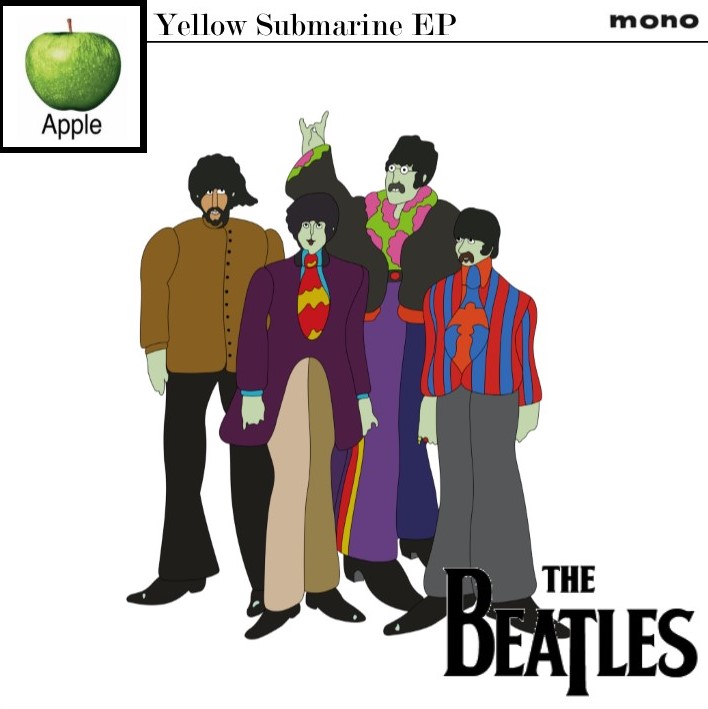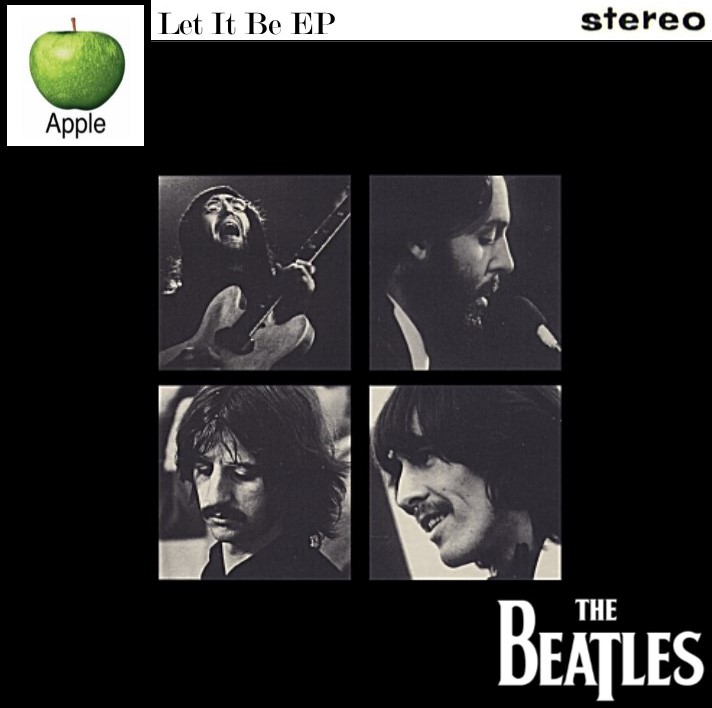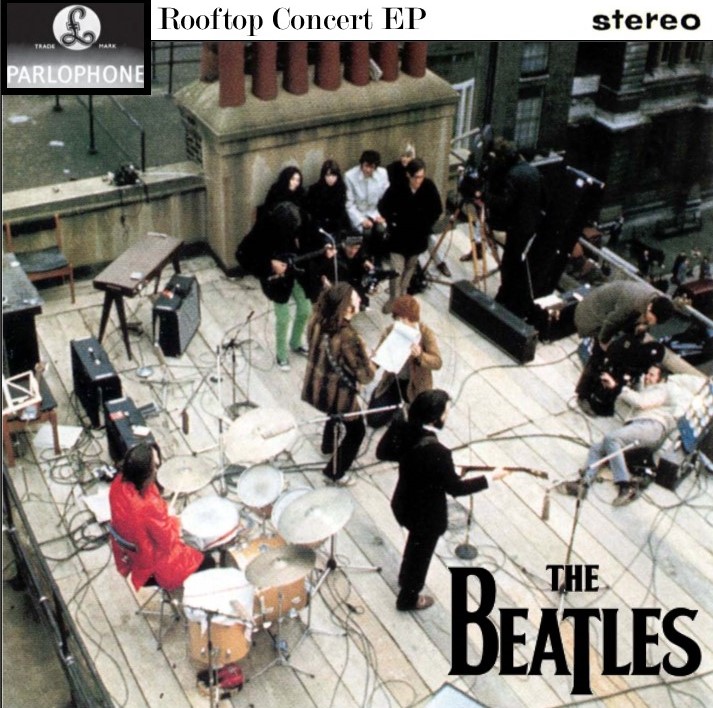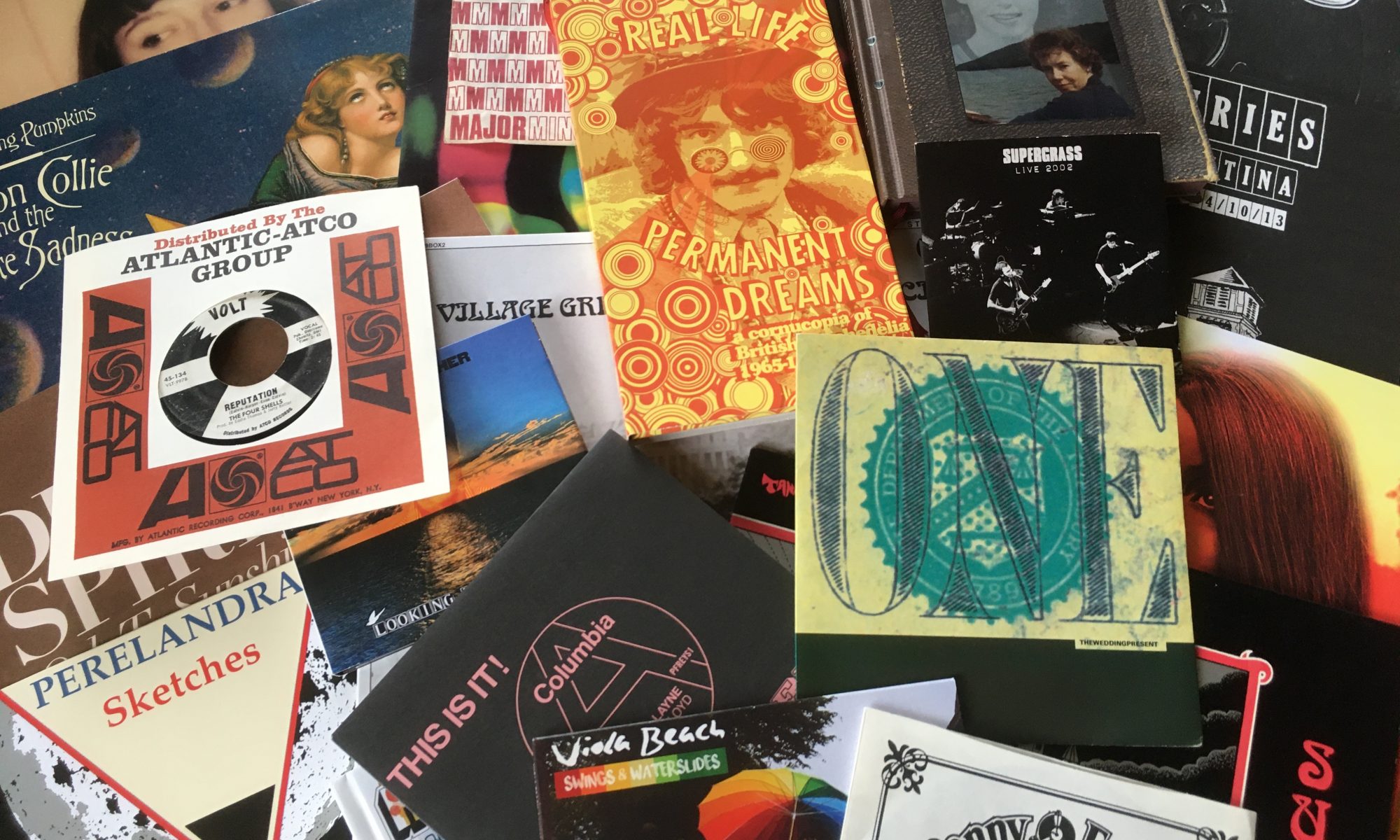So, after an additional wait of a year, ‘Let It Be’ by The Beatles receives the deluxe box set treatment. Must be time therefore to come up with some fantasy releases for the band. For this entry we are not looking at LPs, but EPs. EP stands for Extended Play and tend to be produced on 7” records that contain on average four songs. The format was popular enough (in the UK at least) to have its own chart for a period of time. By 1967, the chat was history and any EP released after this would be listed in the singles chart. The Beatles released a number of EPs during the 60s, and they cover the full range of what was possible with the format. ‘Twist & Shout’ and ‘No.1’ featured songs that had been on the first LP, so if you couldn’t afford the album, this was a nice alternative. ‘The Beatles’ Hits’ could be seen as an early attempt at a greatest hits package. ‘Long Tall Sally’ contained songs that had not appeared anywhere else before. They even released a double EP with ‘Magical Mystery Tour’, that contained a lovely booklet which gave you an idea of what the film was like for those not old enough to have been around when it was shown on the TV in 1968 (like me for instance). It is with this in mind that I present three alternative history EPs for you.
Yellow Submarine (1968)

This one was almost released back in the day, and even though some work was put into mixing the songs ready for release, it was shelved until 2009. More on that later. ‘Yellow Submarine’, the song, was released as the A-side as well as featuring on the ‘Revolver’ album. It was the only A-Side Ringo Starr was lead singer on during the band’s lifetime and even though it was designed as a lighthearted tune for Starr’s limited vocal range, multiple interpretations of the songs meaning were put forward at the time.
The song would be the inspiration behind the ‘Yellow Submarine’ film which was released in 1968 as a way of fulfilling The Beatles three film deal they had with United Artists. Having an animated film with the band only featuring in a short cameo at the end meant that this contract had been honoured. The film came out in July 1968 in the UK, but fans of the band had to wait until the beginning of 1969 for a soundtrack album to come out. The album was criticised for not giving fans of the band the usual value for money that they had become accustomed to. In that, of the thirteen tunes on the record, only six were by The Beatles and of these, only four had not been released before. The other seven were instrumentals written by their producer George Martin. The band considered releasing an EP of the four previously unreleased songs with the addition of the Across the Universe, which had not come out up until that point. The EP idea was shelved, but the songs had been mixed in mono and would eventually see the light of day in 2009 when ‘The Beatles in Mono’ box was released. Well all except the original version of Across the Universe.
What if the band had released this EP in the summer of 1968 when the film came out? All of the songs that were used had all been recorded at that point, being as they were outtakes from other recording projects. As the songs on the EP are quite long, the original EP would have been released playing at 33rpm. However, this meant that the sound quality would have compromised some what so for this exercise, we will keep the playing speed at 45rpm. That means that the EP will need to take inspiration from the ‘Magical Mystery Tour’ EP and being a double disc affair. That also means that there is a little more time to play with. So here is the play list.
Disc 1 – Side A
- Yellow Submarine (Spoken Intro, different sound effects, mono)
Disc 1 – Side B
- Hell Bulldog (Mono)
- All Together Now (Mono)
Disc 2 – Side A
- It’s All Too Much (Mono)
Disc 2 – Side B
- Only A Northern Song (Mono)
- Across The Universe (Take 8, mono)
‘Hell Bulldog’, ‘All Together Now’, ‘It’s All Too Much’ and ‘Only a Northern Song’ are as per the mono found on ‘The Beatles in Mono’ box set, but to be good value for money, there would have been the aforementioned Across the Universe. This would have been take 8 of the song, which included some additional humming vocals and psychedelic instrumentation which were removed when it was eventually released in 1969. No doubt because psychedelia was a bit old hat by then. This would also be at the original speed so would last for 3 mins 44 seconds. The second previously unreleased track (in this version anyway) is ‘Yellow Submarine’. Instead of putting out the version most fans would have owned on Revolver or single, this version would have included the spoken intro version as well as using a slightly different mix with alternative sound effects. ‘It’s A Too Much’ would most probably have been needed to be released at 33rpm anyway due to it being nearly six and a half minutes long.
If that had been released in June 1968, it would have fitted a gap in The Beatles release schedule and would have been a way of wetting the appetite for the forthcoming ‘Yellow Submarine’ film. George Martin though would have missed out on the biggest pay day of his career if this EP had been released instead of the soundtrack LP.
Let It Be (1969)

Music, as has been said many times before, is subjective to the person listening to it. Therefore, there is no such as thing as bad music. There is just music you like or you don’t. With the ‘Let It Be’ album though, this is without doubt one of the weaker releases in the groups discography. The original 1970 LP had been worked over by legendary Phil Spector to paper over some of the cracks which was down to there being a lack of top notch material, apathy from the participants or the realisation (even if they were not going to admit it) that the bands days were numbered. George Harrison, out of all of the The Beatles was feeling the need to branch out on his own due to the lack of space for his material on the bands LPs, and it was only in 1968 that one of his songs was included on a single, albeit on the B-Side.
Having listened the the original LP, the Naked variation and numerous bootlegs that have circulated shows that even though lots of songs that would become well known were presented at the sessions, these tended to not to be finished, or in Harrison’s case, not given the recognition they deserved. The sessions took place in January of 1969 and until ‘Let It Be’ came out in May 1970, the only release from those sessions was the ‘Get Back’ single, backed with ‘Don’t Let Me Down’ in April 1969. George Martin, the bands producer up until this point, had been there for the recording sessions, but the tapes were given over to audio engineer Glyn Johns to do something with, and what he back with was the ‘Get Back’ album.
Johns was given a free hand to do what he wanted with the tapes, and he preferred to use the rougher version of the songs that had been recorded. More polished performances would be used when the ‘Let It Be’ album was eventually released. These rougher versions included some studio chatter, flash starts and takes that broke down. It really did show The Beatles with their trousers down. Needless to say, the mix that John’s had prepared in May 1969 was rejected.
What if the album was not released in 1970, but an EP of some of the stronger songs was sent to record shops, using Glyn John’s mix and released as a stop gap between the release of ‘The Ballad of John & Yoko’ single in May 1969 and the ‘Abbey Road’ LP in the September. Once again, the ‘Magical Mystery Tour’ is the inspiration behind this release.
Disc 1 – Side A
- Dig A Pony
Disc 1 – Side B
- For You Blue
- I’ve Got A Feeling
Disc 2 – Side A
- Let It Be
Disc 2 – Side B
- Two Of Us
If we look at what did make the ‘Let It Be’ album and is not on this EP, ‘Get Back’ is most probably the most glaring absentee. However, this was released as a single in April of 1969 so would be doubling up on songs if used. The Beatles tried to keep singles off of albums and so I used the same logic here. If we look back to the ‘Yellow Submarine’ EP, we are looking at giving Beatles fans value for money. The B-Side of this single, ‘Don’t Let Me Down’ does not get a place on the EP for the same reason. In this alternative timeline, ‘Across The Universe’ would have come out on the Yellow Submarine EP with ‘Dig It’ and ‘Maggie Mae’ being short snippets so no major loss there. As was the way of thing, Harrison would not have got more than one song on this proposed EP, so it was a toss up between ‘For You Blue’ and ‘I Me Mine’. Not much to choose from on these, and neither are particularly good, especially with what Harrison would release on the next Beatles album and his first solo album.
That leaves ‘One After 909’, which we’ll come back to on the next Lost Beatles EP and ‘The Long and Winding Road’. McCartney obviously loves the song. He re-recorded it for his ‘Give My Regards to Broadstreet’ project, and wanting to remove the production work of Phil Spector was the impetus for completing ‘Let It Be…Naked’. Plenty of people have covered it, Brian Wilson (who knows a thing or two about great songs) says it is his all time favourite Beatles track, but to these ears, it it just not up there with McCartney’s best work, and there are better songs on this EP. Granted, this is not the worst McCartney song from these sessions. ‘Teddy Boy’, take a bow.
Rooftop Concert (1977)

When The Beatles deal with EMI ran out in the mid-70s, the company spent a good deal of its time releasing numerous compilation albums of bands work. However, the only release that of previously unissued material was the ‘Live at the Hollywood Bowl’ LP. You would have thought that with the amount of unreleased material in the archive, they would have been a bit of imaginative, but what do I know about the workings of a multinational record company out to make the quickest buck as possible.
The album does suffer from the technology of the time that it was recorded, and the time in which it was released. George Martin did a good job with what he had, but the alternative history release here is what would have happened if EMI had raided the archive for a release of another live performance by the band. In this case, a few songs from the rooftop concert from 1969, recorded during the making of the ‘Let It Be’ album. Once again, taking a cue from the ‘Magical Mystery Tour’ EP, this is spread over two discs. The Rooftop concert is so famous and inspirational that many other band have copied it down the years, and was brilliantly parodied by The Rutles.
‘One After 909’ starts things off and then is followed by ‘Dig a Pony’, which is a different version than the one used on the ‘Let It Be’ EP. ‘I Got A Feeling’ actually finishes, which did not happen in take that was used when Glyn Johns produced his mix. ‘Get Back’ finishes the EP off nicely, but without Lennon famously saying ‘thank you on behalf of the group’ as this was on the third run through of the song. With that, we finish our look at the Lost Beatles EPs.
Disc 1
- One After 909
- Dig A Pony
Disc 2
- I’ve Got A Feeling (First Version)
- Get Back (Second Version)
None of these EPs could be reproduced on Spotify due to some of the material still not having been officially released. It would have been nice if the Rooftop Concert had been included in the ‘Let It Be’ deluxe edition box set which in my opinion, is a bit light on bonus tracks.
